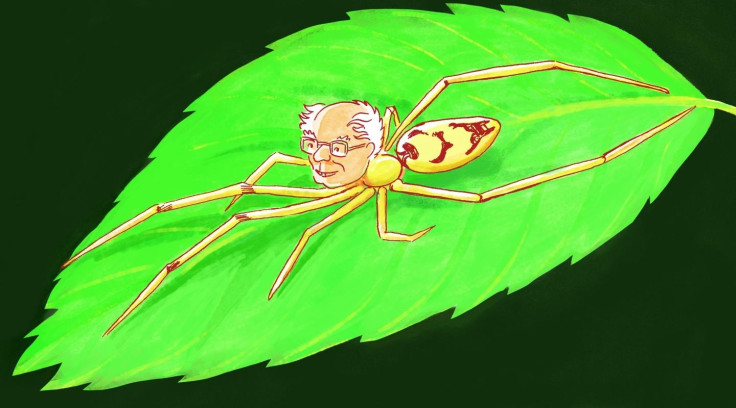New species of 'smiley-faced spiders' named after David Attenborough, Bernie Sanders and more
The spiders have a smiley-face pattern on their abdomens and are found across the Caribbean region.

Spintharus barackobamai, S. davidattenboroughi, S. leonardodicaprioi, S. berniesandersiand and S. davidbowiei are just 15 new species of 'smiley-faced' spiders discovered by a scientist and four of his undergraduate students.
They have been named respectively after Barack Obama, David Attenborough, Leonardo DiCaprio Bernie Sanders and David Bowie, among other well-known personalities who have campaigned for environmental issues. The exotic translations follow the scientific naming system for newly discovered species.
"This was an undergraduate research project," said Ingi Agnarsson, a spider expert and professor of biology at the University of Vermont who led the study. "In naming these spiders, the students and I wanted to honour people who stood up for both human rights and warned about climate change - leaders and artists who promoted sensible approaches for a better world."
Until now, the yellow, smiley-faced spiders – so named due to the smiley face pattern on their abdomens – in the genus Spintharus are thought to have belonged to one species spread over a wide area stretching from North America down to northern Brazil.
However, when a team of researchers from the Caribbean Biogeography Project led by Agnarsson examined spiders from Colombia, Mexico, Jamaica, Cuba, Florida, Puerto Rico and the Dominican Republic, they found that the smiley-faced spiders were actually 15 different species.
"And if we keep looking, we're sure there are more," Agnarsson said.
Each student involved in the project was allowed to name a few of spiders, with some choosing to honour family members, "but we all named the Bernie Sanders spider", said Lily Sargeant, one of the students who worked on the project. "We all have tremendous respect for Bernie. He presents a feeling of hope."
The researchers used new molecular techniques to identify the 15 species. "These are cryptic species," Agnarsson said. "They're hard to tell apart by looking at them." However, analysis of their DNA suggests that the genetic differences are clear and they have not been exchanging genes for millions of years.
The study detailing the findings was published in the Zoological Journal of the Linnean Society.
© Copyright IBTimes 2024. All rights reserved.





